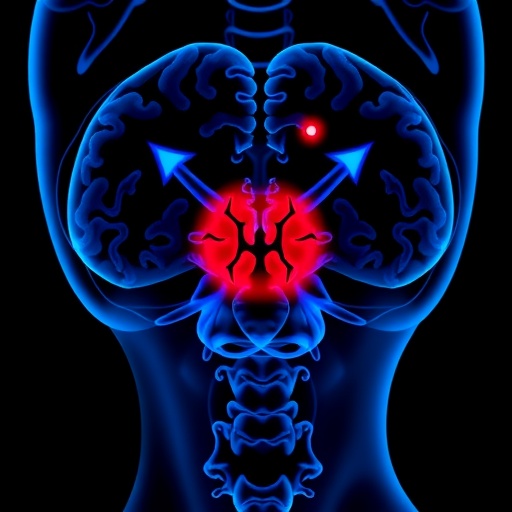Recent advances in the understanding of hepatocellular carcinoma (HCC), a prevalent form of liver cancer, have highlighted the need for more effective therapeutic strategies to counter its aggressive nature and resistance to standard treatments. Sorafenib, a first-line oral multikinase inhibitor, has been the cornerstone of systemic therapy for advanced HCC. However, its effectiveness is often undermined by the development of resistance. In a groundbreaking study led by researchers Li, Wang, and Zou, a compelling mechanism for overcoming this resistance has been uncovered: the inhibition of dipeptidyl peptidase 9 (DPP9) highlights the potential for enhancing sorafenib sensitivity through the induction of ferroptosis.
Ferroptosis, a term introduced to the scientific lexicon in recent years, refers to a unique form of regulated cell death characterized by the accumulation of lipid peroxides. Unlike classical apoptosis or necrosis, ferroptosis is driven primarily by iron-dependent mechanisms. This oxidative form of cell death presents a novel therapeutic avenue for cancers that tend to evade conventional treatment modalities. The findings from this research are especially pertinent given the almost universal challenge of treatment resistance faced by oncologists in the management of HCC.
In their meticulously designed experiments, the researchers probed the role of DPP9 inhibition in cancer cell lines and animal models of HCC. They postulated that DPP9, an enzyme involved in the regulation of apoptosis and other cellular processes, may contribute to the mechanisms underlying resistance to sorafenib. Their comprehensive studies used pharmacological inhibitors and genetic models to effectively demonstrate that silencing DPP9 not only sensitized HCC cells but also dramatically increased the levels of ferroptosis.
The implication of these findings is profound. By integrating DPP9 inhibition with sorafenib therapy, there emerges a potential dual-therapeutic approach. The synergy between DPP9 inhibitors and sorafenib suggests a revolutionary paradigm shift in HCC treatment regimens. Clinicians may soon have an opportunity to combine existing therapies with innovative approaches targeting ferroptosis, thus potentially improving clinical outcomes and prolonging survival in patients suffering from this notoriously difficult-to-treat cancer.
As part of the study, extensive biochemical assays were employed to establish that ferroptosis induction via DPP9 inhibition leads to significant alterations in intracellular redox states. The elevation of reactive oxygen species (ROS) served as a hallmark indicator of ferroptosis, reinforcing the association between the inhibition of DPP9 and the activation of ferroptotic pathways. Furthermore, the researchers noted that the anti-cancer effects of DPP9 inhibition were not limited to enhancing sorafenib sensitivity but also extended to other cancer therapies, opening up the discussion for broader implications in oncology.
The pathway through which DPP9 operates appears to intersect at multiple points with key cellular signaling networks. Notably, the research highlights the interplay between DPP9, cellular metabolism, and oxidative stress responses. This complex network underscores how understanding and targeting specific molecular players can yield new strategies for tackling HCC. Moreover, the study raises important questions about the therapeutic window for DPP9 inhibition — will it be safe, and how can it be maximized for patient benefit, given the multifaceted roles DPP9 plays in various cellular processes?
Impacts of such findings extend beyond just HCC. The mechanistic insights gained could well resonate with other malignancies that exhibit similar treatment resistance profiles. In this light, the promising future for harnessing ferroptosis could invite a slew of research initiatives and clinical trials aimed at evaluating DPP9 inhibitors across various cancers.
In an ever-evolving field like oncology, where new treatment modalities emerge seemingly every day, the discovery of novel approaches to exuding sensitivity in previously resistant tumors is crucial. As researchers delve deeper into the biology of ferroptosis and its therapeutic potential, there is hope that innovative ways of using existing drugs — like sorafenib — will rise to the forefront, reshaping our future interactions with various cancers.
This research serves as a call to action for the scientific community to invest in potential translational approaches from bench to bedside. It emphasizes the importance of not just relying on traditional treatment modalities but embracing wider interdisciplinary collaborations to unearth groundbreaking therapies aimed at improving patient survival and quality of life. As the clinical landscape continues to shift, embracing novel mechanisms such as ferroptosis through DPP9 inhibition could signify a new era in cancer therapeutics, one in which tumors like HCC can be more effectively conquered.
With ongoing studies to validate these findings in larger and more diverse cohorts, the potential benefits of DPP9 inhibitors combined with existing treatments will be closely watched. Findings such as these not only highlight the need for rapid translational research but also the promise held by innovative scientific approaches. As we await future developments, the implications of this study stand to transform the treatment landscape for hepatocellular carcinoma and beyond.
Subject of Research: Hepatocellular carcinoma and treatment resistance
Article Title: Inhibition of dipeptidyl peptidase 9 improves sorafenib sensitivity by inducing ferroptosis in hepatocellular carcinoma
Article References:
Li, Q., Wang, Y., & Zou, J. Inhibition of dipeptidyl peptidase 9 improves sorafenib sensitivity by inducing ferroptosis in hepatocellular carcinoma.
J Cancer Res Clin Oncol 151, 243 (2025). https://doi.org/10.1007/s00432-025-06300-z
Image Credits: AI Generated
DOI:
Keywords: Hepatocellular carcinoma, Sorafenib, Dipeptidyl peptidase 9, Ferroptosis, Treatment resistance.
Tags: Dipeptidyl Peptidase 9 inhibition in cancerEnhancing sorafenib sensitivityFerroptosis as a cancer therapyHepatocellular carcinoma treatment strategiesliver cancer research advancementsMultikinase inhibitors in oncologyNovel therapeutic approaches for liver cancerOvercoming treatment resistance in HCCOxidative cell death in cancer researchRegulated cell death in liver cancersorafenib resistance mechanismsTargeting DPP9 for improved cancer outcomes





